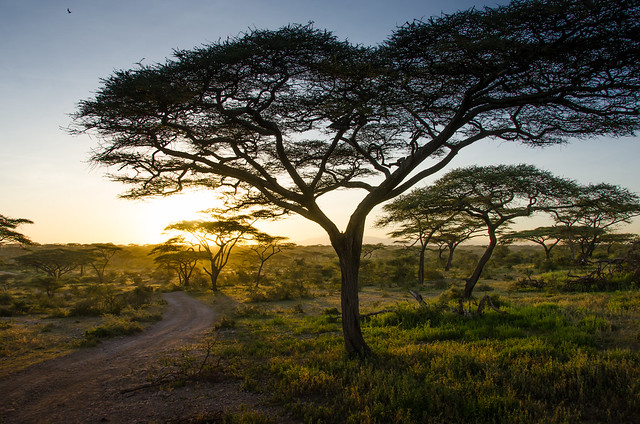Acacia Tree The Coolest Tree in Africa
The Acacia tree in Africa is known as desert gold and is well-known iconic symbols on the southern and eastern African savannas.
The acacia tree is on the African savanna provides desert gold aka gum arabic for the world baking and soft drink industry.
Gum arabic is used in many foods as an ingredient for thickening and emulsifing baking and popular soft drink ingredients. The flavor of powder dry gum arabic is a neutral flavor, tasteless, and odorless.
 |
| Acacia Tree at sunset in Tanzania Africa |
Acacia trees in the African Savanna
The acacia tree in Africa also known as desert gold, are well-known landmarks on the southern and eastern African savanna. There are over 1,300 species of Acacia worldwide, primarily in Africa and Australia.
Acacias are highly drought-resistant; therefore, thrive in harsh dry environments due to their tolerance to water scarcity. Acacias are also referred to as thorn trees; some have long straight thorns while others have hook-shaped ones.
The umbrella-dome shape of most African acacias is an evolutionary adaptation that enables the trees to capture the maximum amount of sunlight, with the smallest of leaves. Acacia Senegal, found in Sudan and the northern Sahara, is the main source of gum arabic, which has been used for over 2,000 years.
Acacia Senegal, gum arabic, is used in adhesives, medicines, inks, confectioneries, and lithographic plates, special papers, fabrics, and as an anti-corrosive coating for metals as well as in the manufacture of matches and ceramic pottery, fireworks, cartridge powder, pesticide and insecticide sprays, concrete and in detergents.
 |
| Gum Arabic the substance obtained from acacia trees |
The bark of most acacias is rich in tannin, which is used in tanning and in dyes and inks. Besides the highly valuable Gum Arabic, acacia trees offer animal feeds as its pods and leaves are fodder for camel and goats. Acacia trees are also major sources of fuel for families residing in the drylands of the savannas. Dried branches are used as firewood while some families exploit it for charcoal production.
Acacia erioloba, known as the giraffe thorn or camel thorn tree, is the most recognizable tree in Angola, Botswana, Mozambique, Namibia, South Africa, Zambia, and Zimbabwe. It can grow up to 59 feet or 18 meters tall and live up to 200 years. The taproot, which is more than 3 times longer than the tree, can grow up to 196 feet or 60 meters, allowing it to access deep groundwater sources and live in extremely dry climates.
Giraffes love acacia trees eating the undersides carefully not being pricked by the thorns. They carefully wrap their long, prehensile tongues between the spines and delicately remove the tender tasty leaves. In order to ensure enough food, giraffes tend to eat downwind from trees, in the hope that the trees do not alarm each other. They also usually browse only for a short time before moving on to the next tree.
Most species of the African acacia have long, sharp thorns, which prevent many animals from eating their leaves. Now and again stinging ants live inside hollowed-out thorns, which provide another layer of protection for the tree. Furthermore, the trees create toxic chemicals when they detect danger such as overgrazing triggering nearby acacia trees to start making their own poison.
When the leaves begin to fill with toxins, they release ethylene gas, which drifts out of their pores and toward other acacias in close range. In response, the nearby trees begin to manufacture their own toxins. Within 15 minutes, all the neighboring trees increase the tannin levels in their leaves, making the area unappetizing to tree-browsing animals.






